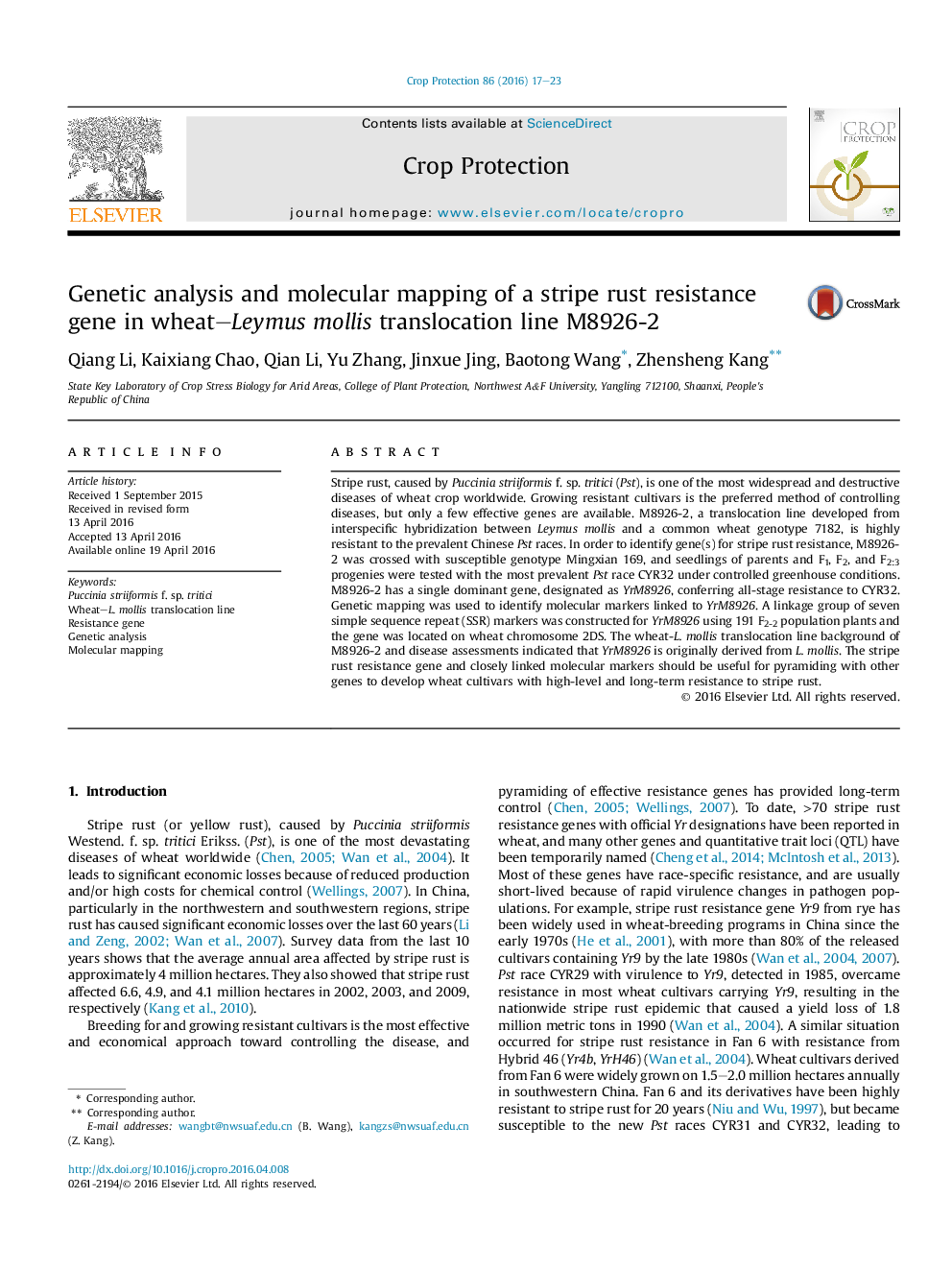| Article ID | Journal | Published Year | Pages | File Type |
|---|---|---|---|---|
| 6373326 | Crop Protection | 2016 | 7 Pages |
Abstract
Stripe rust, caused by Puccinia striiformis f. sp. tritici (Pst), is one of the most widespread and destructive diseases of wheat crop worldwide. Growing resistant cultivars is the preferred method of controlling diseases, but only a few effective genes are available. M8926-2, a translocation line developed from interspecific hybridization between Leymus mollis and a common wheat genotype 7182, is highly resistant to the prevalent Chinese Pst races. In order to identify gene(s) for stripe rust resistance, M8926-2 was crossed with susceptible genotype Mingxian 169, and seedlings of parents and F1, F2, and F2:3 progenies were tested with the most prevalent Pst race CYR32 under controlled greenhouse conditions. M8926-2 has a single dominant gene, designated as YrM8926, conferring all-stage resistance to CYR32. Genetic mapping was used to identify molecular markers linked to YrM8926. A linkage group of seven simple sequence repeat (SSR) markers was constructed for YrM8926 using 191 F2-2 population plants and the gene was located on wheat chromosome 2DS. The wheat-L. mollis translocation line background of M8926-2 and disease assessments indicated that YrM8926 is originally derived from L. mollis. The stripe rust resistance gene and closely linked molecular markers should be useful for pyramiding with other genes to develop wheat cultivars with high-level and long-term resistance to stripe rust.
Related Topics
Life Sciences
Agricultural and Biological Sciences
Agronomy and Crop Science
Authors
Qiang Li, Kaixiang Chao, Qian Li, Yu Zhang, Jinxue Jing, Baotong Wang, Zhensheng Kang,
